
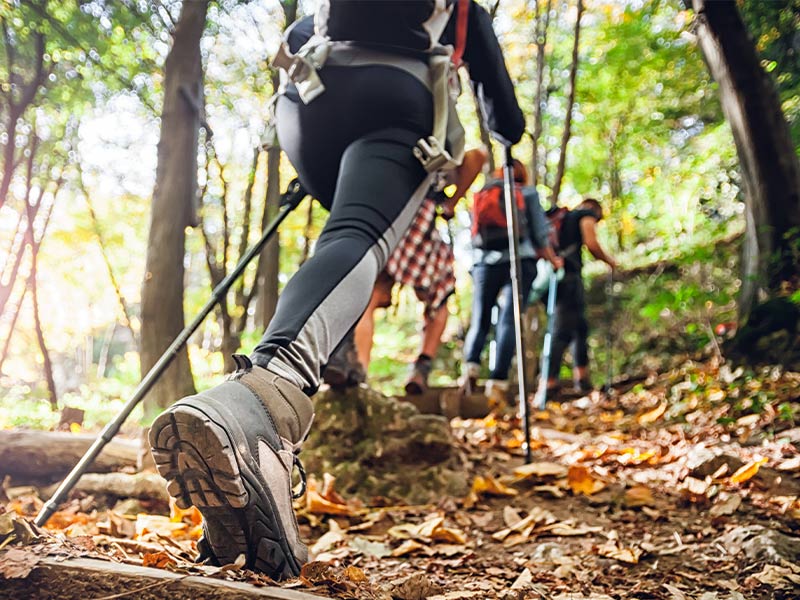
Before your first step, check out our tips to kick things off on the right foot.
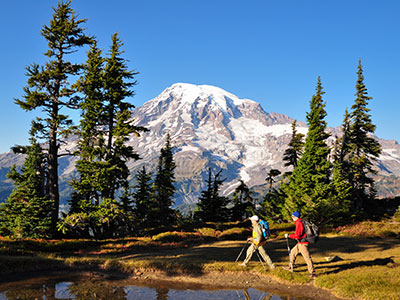
1. Know the conditions
Spontaneity is great in most cases, but unless you are an advanced hiker, it pays to know the maintenance level, length, elevation changes, and how those elevation changes are executed.
Some trails are well hiked, or regularly maintained by the park system, so they will generally be marked and easy to follow. Having this info in advance can help you make the appropriate choice for your abilities.
Length is a pretty straightforward consideration, but you might consider whether you prefer the variable scenery of a trail that loops vs. the familiarity you gained on the first leg of a there-and-back style trail.
The other consideration, elevation change, could be particularly important for those who have pre-existing health conditions, especially joint, or back issues.
Even seemingly slight elevation changes can prove daunting if they are sudden and steep, or if there are stairs, especially uneven packed earth stairs that are used on some trails.
The bottom line, it pays to know before you go. Trail books are great for finding the right trails for you, but most experts recommend checking the up-to-date information. Lean on online resources over books for more timely information. The Washington Trails Association website is a fantastic resource.
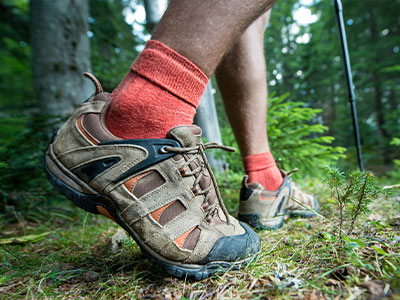
2. Shoes are your support system
It might seem simple but the right footwear can make or break your trip. A family member decided to try to walk the Camino de Santiago across Spain in sneakers and ended up with tendonitis in both Achilles, and fewer toenails than they started with.
While sneakers may be serviceable on shorter trails, if you are in them for the long haul, you’ll likely want to invest in boots, trail shoes, or hiking sandals.
Our advice in this area is to try the footwear in person whenever possible especially before you have a sense of how true to size each manufacturer trends. Nothing beats having a first-hand knowledge of each pair’s sense of fit
and comfort. Also, be sure you wear the same kind of socks you’ll generally be wearing on your hikes to ensure the level of foot comfort you experience in the store will match how it feels in the field.
As an additional tip, it pays to break in new footwear on shorter trips before taking them on a longer excursion.
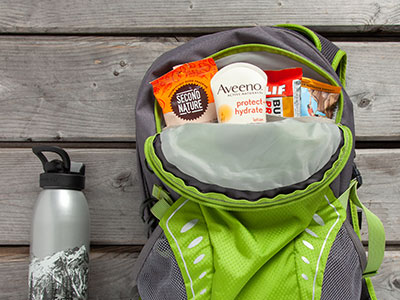
3. Come prepared
It always pays to pack light and pack right. To ensure the best hiking experience possible, make sure to pack sufficient water, snacks, and medication appropriate to the length of your selected hike.
For a shorter trip, a large water bottle, like the one you’d use for a workout, is likely adequate, depending on the pace you are setting.
If you’re planning to go on a series of longer hikes, you may consider investing in a Water bladder like a Camelbak, or something similar. These bladders help evenly distribute the water’s weight and their long straws let you take sips on the go without having to hold or dig for a bottle.
And remember, if you feel thirsty, you may already be dehydrated!
Trim your toenails! Longer toenails can reduce comfort by rubbing against the toecap of boots and shoes. Take care to cut straight across, as opposed to curved, to avoid ingrown toenails and friction against your socks and boots.
If you are hiking in wetter weather, consider using two layers of socks, combining a standard hiking sock with a thinner moisture wicking sock. Foot powder in added to your socks before you hike can help prevent your toes rubbing together.
We also recommend packing extra socks and a small first aid kit that includes pain relievers, sunscreen, blister pads, moleskin, and bandaids. (BTW Bartell’s has all the supplies to put together the perfect first aid and foot care kit ).
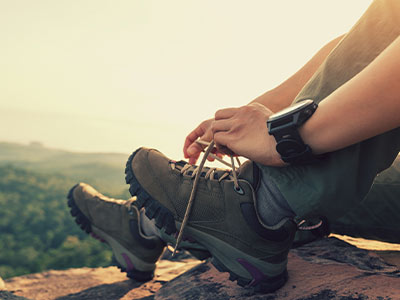
4. Make necessary pitstops
If you feel something, do something. If you feel rubbing or discomfort, stop. Take a moment to take off your footwear and examine the area. Hot spots, areas that burn or sting, are likely future blisters. Fix bunching, or misaligned seems on socks, rocks, debris and other easy answers.
Apply moleskin and be cognizant of to keep an even step, avoiding favoring or limping, which can cause stress on other parts of your body, resulting in further injury.
When you are taking a break to admire the scenery, especially on longer hikes, use the opportunity to air out your feet and swap socks. A sock swap is
a must if they became wet along the way. Over a prolonged period of time wet feet can cause a whole host of issues, including blisters, foot fungus and torn/cracked skin.
If you do end up with a blister, take care of it in the right way, right away.
For an unbroken blister, apply a blister plaster, or cream & tape for extra cushion. Try to avoid popping or draining in the field since it could lead to infection if not done properly.
If the blister has already popped, clean the area with antibiotic ointment and dress it with a plaster or gauze & tape. Don’t put tape directly on the blister.
If the blister is very large, or too painful to walk on, then you may need to drain it before you can get to a more ideal environment.
Sterilize a needle, or knife with heat or alcohol. Prick the blister at the bottom edge and drain the fluid. Clean the area with antibiotic ointment and dress it with a plaster or gauze & tape. Again, pretty please, don’t accidentally put tape directly on the blister.
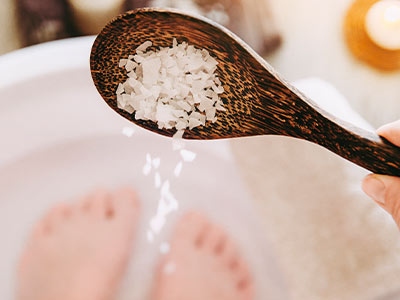
5. Take an opportunity to pamper yourself
After a long hike take care of your feet with a nice soak in Pure Epsom Salt by Dr Teal’s. Looking to avoid unsightly callouses? Try moisturizing with Burt’s Bees Coconut Foot Crème. Pamper and moisturize with a foot mask from Smith & Vandiver.
Also keep in mind that beyond aesthetics, callouses can snag on socks and crack, causing discomfort or another hotspot needing treatment.
Bartell’s also has you covered for all of your practical foot needs with products from Dr. Scholl’s, Tinactin, and more!
And there you have it! We hope you use our tips in good health on your next hike to be prepared and keep your feet fit!
Have fun & we’ll see you on the trails!



